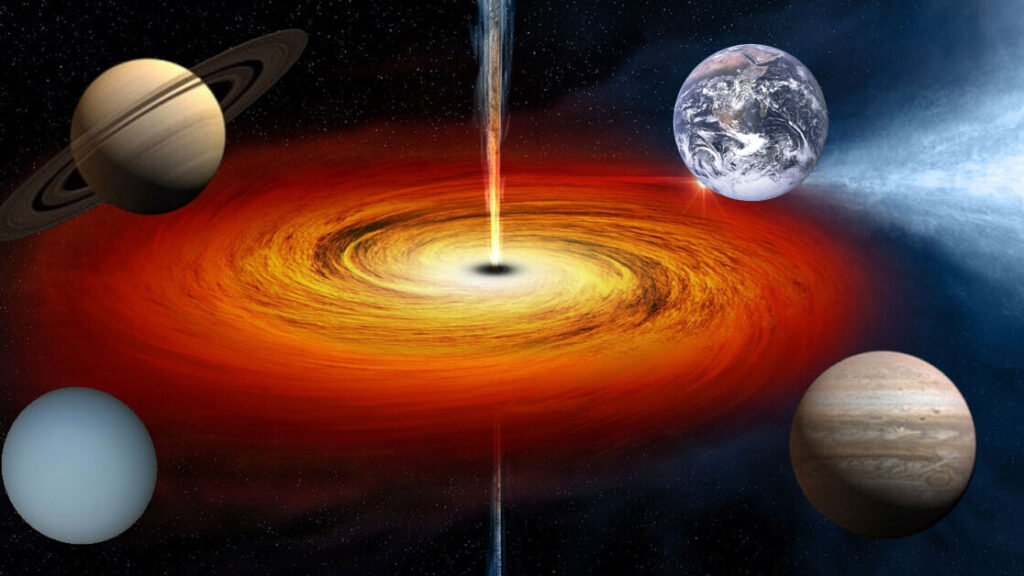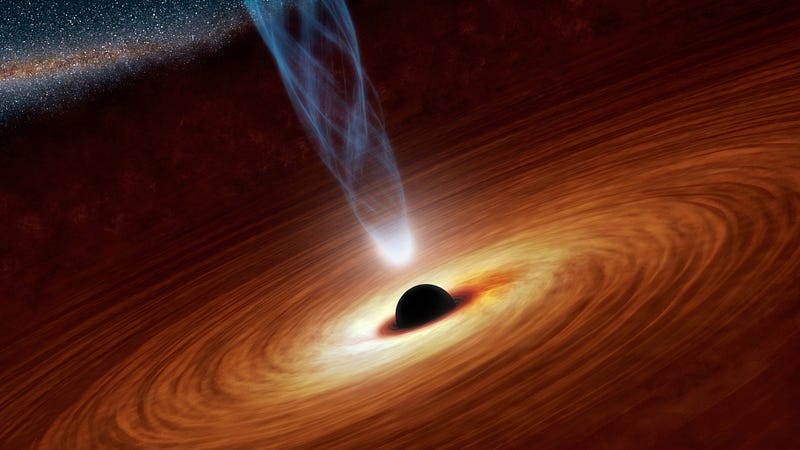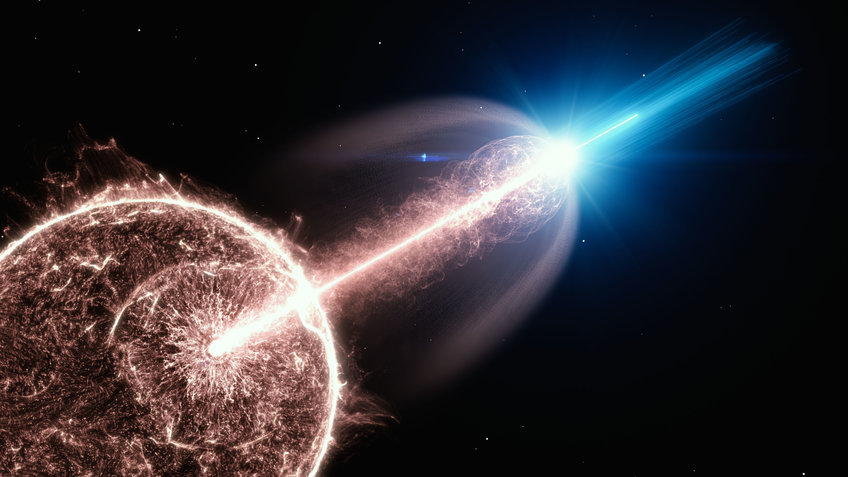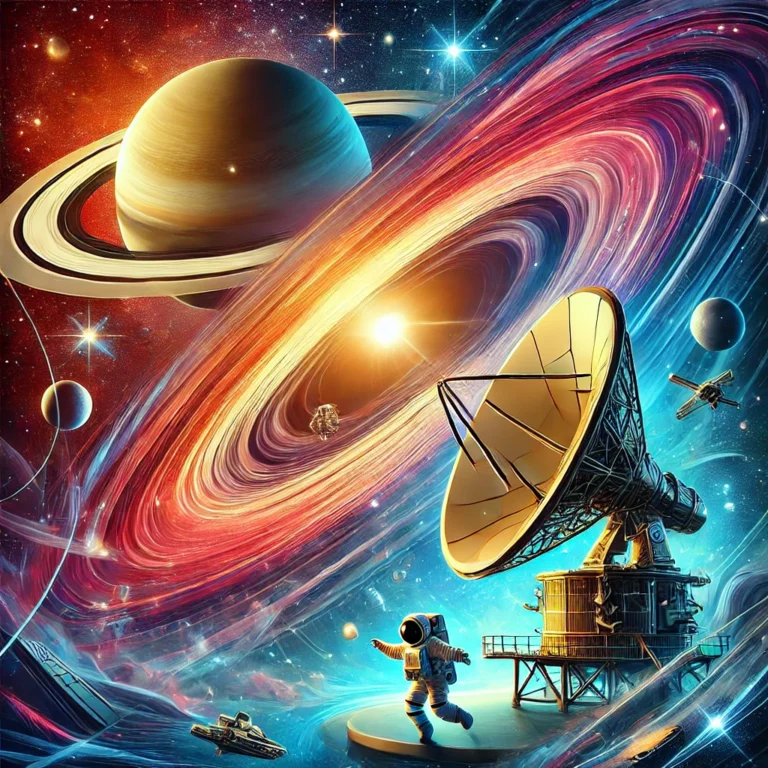INTRODUCTION:

Space, the final frontier, where every adventurous mind wanders endlessly. Space has always fascinated humanity and from the majestic stars and galaxies to the mysterious black holes and dark matter, space is full of wonders and secrets waiting to be uncovered. However, space can also be a pretty disturbing place, and in this post, we’ll explore the top 10 most disturbing facts about space that will leave you speechless.
1. The Great Attractor: A Cosmic Mystery.

The Great Attractor is one of the most intriguing phenomena in our universe, drawing the attention of astronomers and scientists alike. It is a massive region of space located about 250 million light-years away from Earth, exerting a gravitational pull on our Milky Way galaxy and many others. But what exactly is the Great Attractor, and why is it so significant? Let’s explore this cosmic mystery.
What is the Great Attractor?
The Great Attractor is not a single object like a star or a planet; rather, it is a vast region in intergalactic space that serves as a gravitational focal point for a large number of galaxies. It lies within the Laniakea Supercluster, which includes our Milky Way and approximately 100,000 other galaxies. The gravitational influence of the Great Attractor affects the motion of these galaxies, pulling them towards it at astonishing speeds.
How Does It Work?
- Gravitational Pull: The Great Attractor has an immense mass—estimated to be equivalent to tens of thousands of Milky Way galaxies combined. This mass creates a strong gravitational field that influences nearby galaxies, causing them to move toward the region.
- Redshift Observations: Astronomers have observed that galaxies in the direction of the Great Attractor exhibit varying redshifts, which indicate their velocities relative to us. Some galaxies are moving towards it at speeds of up to 600 kilometers per second, while others are receding.
- Zone of Avoidance: The Great Attractor is located in an area known as the Zone of Avoidance, which is obscured by the dust and stars of our own Milky Way galaxy. This makes it challenging to observe directly using visible light, but X-ray observations have provided insights into its structure and influence.
The Discovery of the Great Attractor
The existence of the Great Attractor was first suggested in the 1970s when astronomers noticed that certain galaxies were moving in ways that could not be explained by the expansion of the universe alone. By 1986, researchers had pinpointed its location and confirmed its gravitational effects on surrounding galaxies.
Why Is It Important?
Understanding the Great Attractor is crucial for several reasons:
- Cosmic Structure: It helps scientists comprehend how large-scale structures in the universe are formed and how they interact with one another.
- Galaxy Motion: Studying its influence on nearby galaxies provides insights into their dynamics and evolution.
- Dark Matter Research: The Great Attractor may also play a role in understanding dark matter, as its mass distribution could reveal more about this mysterious substance that makes up much of the universe’s mass.
Current Research and Future Exploration
Astronomers continue to study the Great Attractor using advanced techniques such as X-ray astronomy and radio observations. These methods allow scientists to peer through the dust clouds obscuring our view and gather data about this fascinating region.
The Great Attractor remains one of the most compelling mysteries in astrophysics. Its immense gravitational pull affects our galaxy and countless others, shaping their trajectories through space. As research continues, we may unlock more secrets about this cosmic phenomenon and deepen our understanding of the universe’s structure.
Trending Products:
To complement your exploration of cosmic mysteries, consider checking out the below equipments.
- Star Projector Night Light: This product creates a stunning display of stars and galaxies in your room, perfect for anyone interested in astronomy or looking to enhance their home decor.
- Beginner’s Telescope: A great tool for aspiring astronomers, this telescope allows users to observe celestial objects up close, making it an excellent gift for stargazers.
- Astronomy Books: Recommend popular titles like “Astrophysics for People in a Hurry” by Neil deGrasse Tyson for readers interested in learning more about space.
Understanding Dark Matter, Black Holes, and the Heat Death of the Universe
The universe is filled with mysteries, and among the most intriguing are dark matter, black holes, and the concept of the heat death of the universe. These phenomena challenge our understanding of physics and cosmology, prompting scientists to explore the very fabric of reality. Let’s delve into each of these topics to uncover their significance and implications.
2. Dark Matter.

What is Dark Matter?
Dark matter is a type of matter that does not emit, absorb, or reflect any electromagnetic radiation, making it invisible to our telescopes. Despite its elusive nature, dark matter constitutes about 27% of the universe’s mass-energy density. This means that while we can’t see it directly, we know it exists because of its gravitational effects on visible matter.
How Do We Know Dark Matter Exists?
The existence of dark matter was first suggested in the 1930s by Swiss astronomer Fritz Zwicky while studying the Coma galaxy cluster. He noticed that galaxies within the cluster were moving at speeds that could not be explained by the visible mass alone. If only the visible matter were present, the galaxies would have flown apart due to insufficient gravitational pull.
In the 1970s, astronomer Vera Rubin further confirmed dark matter’s existence by studying the rotation curves of galaxies. She found that stars on the outskirts of galaxies were moving much faster than expected based on the visible mass. This discrepancy indicated that there must be additional mass—dark matter—holding these galaxies together.
3. Black Holes

What are Black Holes?
Black holes are regions in space where gravity is so strong that nothing—not even light—can escape their pull. They form when massive stars collapse under their own gravity at the end of their life cycles. The core implodes, creating a singularity surrounded by an event horizon—the point beyond which nothing can escape.
Types of Black Holes
- Stellar Black Holes: Formed from collapsing stars, these black holes typically have masses between three and several tens of solar masses.
- Supermassive Black Holes: Found at the centers of most galaxies, including our Milky Way, these black holes can have masses equivalent to millions or even billions of suns.
- Intermediate Black Holes: These are less common and lie between stellar and supermassive black holes in terms of mass.
- Primordial Black Holes: Hypothetical black holes that may have formed shortly after the Big Bang.
The Role of Black Holes in the Universe
Black holes play a crucial role in galaxy formation and evolution. Their immense gravitational pull can influence star formation and even lead to the creation of jets that emit high-energy radiation across vast distances.
4. The Heat Death of the Universe

The heat death of the universe is a theoretical scenario based on the second law of thermodynamics, which states that entropy—a measure of disorder—tends to increase over time. As energy becomes evenly distributed throughout space, stars will burn out, galaxies will drift apart, and eventually, all energy will be uniformly spread out.
What Happens During Heat Death?
- Star Formation Stops: As stars exhaust their nuclear fuel, they will cease to shine, leading to a dark universe filled with cold remnants.
- Black Holes Evaporate: Over incredibly long timescales (billions of years), black holes may slowly evaporate through a process known as Hawking radiation.
- Uniform Temperature: Eventually, temperatures across the universe will equalize at a very low level close to absolute zero.
- A Dark and Empty Universe: In this scenario, all structures will have dissipated into a cold void where no significant energy gradients exist to sustain processes like star formation or life as we know it.
As we continue to explore these cosmic mysteries through advanced telescopes and theoretical models, we may uncover new insights into how our universe operates and what lies ahead for all its inhabitants.
5. Gamma-Ray Bursts: Cosmic Fireworks

Imagine an explosion so powerful it outshines an entire galaxy for a brief moment. That’s the mind-blowing reality of a gamma-ray burst (GRB). These cosmic fireworks are the most energetic events in the universe since the Big Bang.
Think of it like this: a supernova, the death of a massive star, is already an incredibly violent explosion. But a GRB takes that to a whole new level. They’re like a cosmic cannon blast, releasing a colossal burst of energy in the form of gamma rays – the most powerful form of light.
What causes these cosmic blasts?
Scientists believe GRBs have a few potential triggers:
- Dying Stars: When a massive star (much larger than our Sun) runs out of fuel, it can collapse under its own gravity, forming a black hole. This catastrophic event can unleash a powerful jet of particles moving at nearly the speed of light, producing a GRB.
- Neutron Star Collisions: Imagine two incredibly dense objects, called neutron stars, colliding at nearly the speed of light. The resulting smash-up releases a tremendous amount of energy, including a powerful burst of gamma rays.
Why are GRBs important?
- Cosmic Beacons: GRBs are so incredibly bright that they can be seen across vast distances in the universe. This makes them valuable tools for studying the distant cosmos and understanding how galaxies evolve.
- Rare and Mysterious: GRBs are relatively rare events, making them challenging to study. However, every observation brings us closer to understanding these extreme cosmic phenomena.
GRBs are a reminder of the incredible power and violence that can occur in the universe. They are a testament to the vastness and the dynamic nature of the cosmos.
6. The Wow! Signal:
In 1977, a strong, narrowband radio signal was detected by a radio telescope. The signal lasted for 72 seconds and was so strong that it was dubbed the “Wow!” signal. Despite numerous attempts to verify the signal, its origin remains a mystery.
7. Fast Radio Bursts: Cosmic Mysteries
Imagine a burst of energy, brighter than the Sun, flashing across the universe in a fraction of a second. That’s a Fast Radio Burst (FRB) – a cosmic mystery that has baffled scientists for years.
These fleeting bursts of radio waves, originating from deep space, are incredibly powerful yet incredibly brief. Think of them like a cosmic lightning bolt, crackling across vast distances.
What causes these cosmic flashes?
That’s the million-dollar question! Scientists are still scratching their heads, but some leading theories include:
- Magnetars: These are incredibly dense neutron stars with incredibly strong magnetic fields.
- Colliding Neutron Stars: When two neutron stars smash together, the resulting explosion could release a powerful burst of radio waves.
- Black Holes: Some theories suggest that FRBs could originate from the chaotic environment around supermassive black holes.
Why are FRBs so important?
- Cosmic Beacons: FRBs can travel vast distances across the universe, making them potential probes to study the interstellar medium – the space between galaxies.
- Unlocking Cosmic Secrets: By studying FRBs, we can learn more about the extreme physics of the universe and the exotic objects that exist within it.
FRBs are a reminder that the universe is full of surprises. These mysterious flashes are pushing the boundaries of our understanding and challenging us to explore the unknown.
8. Oumuamua: The Interstellar Visitor
Imagine an object zipping through our solar system, not from within our own cosmic neighborhood, but from the vast expanse of interstellar space. That’s exactly what happened in 2017 with the arrival of Oumuamua.
This mysterious object, shaped like a cigar or perhaps even a pancake, defied easy categorization. Was it an asteroid? A comet? Something else entirely?
Oumuamua’s unusual trajectory and strange behavior puzzled astronomers. It seemed to be accelerating slightly faster than expected, suggesting it might be experiencing some kind of non-gravitational force. This led to some wild speculation, including the possibility that it could be an alien spacecraft!
While the most likely explanation is a more natural one, perhaps involving outgassing or a unique shape and composition, Oumuamua remains an enigma. It serves as a reminder that our universe is full of surprises and that there’s still so much we don’t understand about the cosmos.
9. Gravitational Waves: Ripples in the Fabric of Spacetime
Imagine space-time as a giant trampoline. Now, imagine two bowling balls placed on that trampoline. They’ll cause dips and curves in the fabric of the trampoline around them. That’s a simplified way to think about gravity.
Now, what if those two bowling balls start swirling around each other? They’ll create ripples in the trampoline, sending waves outward. That’s essentially what gravitational waves are.
These ripples, predicted by Albert Einstein’s theory of general relativity, are disturbances in the fabric of spacetime itself. They are created by some of the most violent events in the universe, such as:
- Colliding black holes: When two massive black holes spiral around each other and merge, they send out powerful gravitational waves.
- Colliding neutron stars: These incredibly dense stars, the remnants of massive stars that have exploded, also produce gravitational waves when they collide.
For a long time, gravitational waves were purely theoretical. But in 2015, scientists made history when they directly detected these elusive ripples for the first time using the Laser Interferometer Gravitational-Wave Observatory (LIGO).
This groundbreaking discovery opened a new window on the universe, allowing us to “listen” to the cosmos in a way we never could before. Gravitational wave astronomy is a young but rapidly growing field, promising to revolutionize our understanding of the universe and the most extreme events within it.
10. The Expanding Universe: A Cosmic Inflation
Imagine a raisin bread dough rising in the oven. As the dough expands, the raisins move further and further apart, even though they aren’t actually moving through the dough themselves. That’s a bit like how our universe is expanding.
It’s not that galaxies are flying through some empty void of space; rather, the very fabric of space itself is stretching and growing. This expansion isn’t slowing down; in fact, it’s accelerating!
Think of it like this: the universe is like a giant balloon being inflated. As the balloon gets bigger, the dots painted on it move further apart. Eventually, if the inflation continues unchecked, the dots will be so far apart that they’ll be essentially isolated.
This accelerated expansion is driven by a mysterious force called dark energy. While we don’t fully understand dark energy, its effects are profound. In the distant future, if this expansion continues unabated, galaxies will drift further and further apart, becoming increasingly isolated and eventually disappearing beyond each other’s observable horizons.
The fate of the universe, whether it expands forever or eventually collapses, is still a subject of ongoing research and debate among scientists.
Conclusion:
Space is a vast and mysterious place, full of wonders and secrets waiting to be uncovered. From the disturbing facts mentioned above to the many mysteries still unsolved, space continues to fascinate and inspire us.
Disclosure/Disclaimer:
This article contains affiliate links, supporting our educational and informative contents creation.
We appreciate supporting us to create more value and fascinating contents here on our site for educational purposes only.





